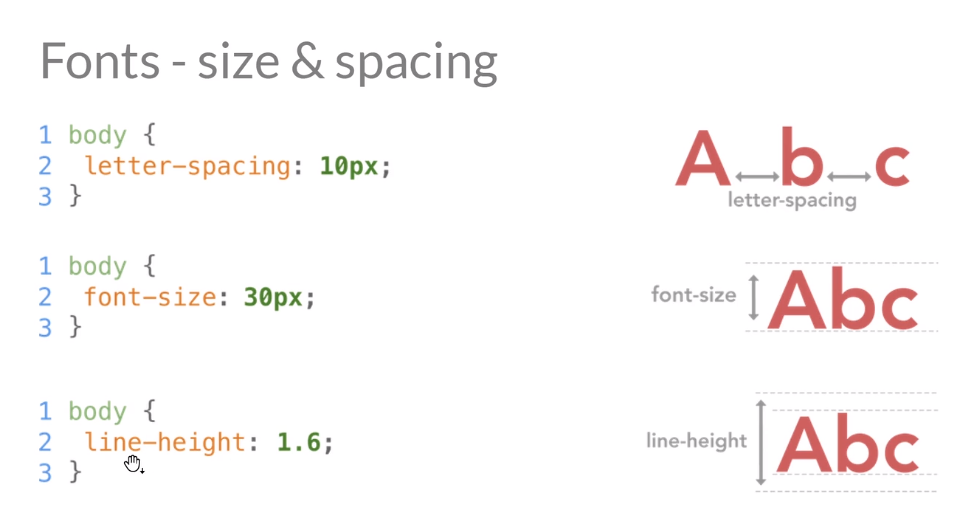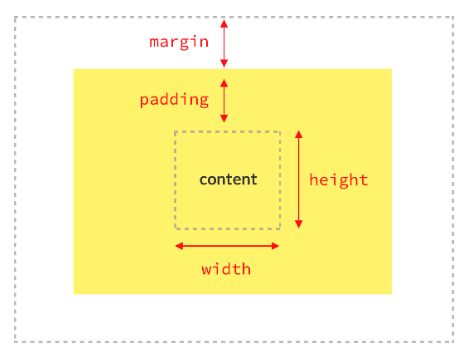00-prepwork
[TOC]
Web 101
Main concepts:
- internet vs web
- HTTP
- client and server
- request and response
- static vs dynamic websites
- backend vs frontend
Web Content & HTML
Basic HTML stuff.
I'm considering taking this emmet course before the Bootcamp: https://www.linkedin.com/learning/emmet-fast-and-efficient-web-coding
Things to remember:
- HTML basic syntax:
<element attribute="value">content</element> <img>tags are self-closing- in an
<a>used for link, thetargetattribute can have the valueblankto open the link in a new tab (btw, this is not a very intuitive thing).
Useful links mentioned at the end of the module:
- Accessibility:
- SEO:
Web Design & CSS

div
Styling divs involves structuring the content and customizing the spacing of our boxes (the yellow rectangle below).

- width: full width of the page
- height: same height as div's content
- margin: external space around the outside of the box
- padding: internal space between content and the border of the box
- border: the limit of the box (default: nothing)
- box-shadow: a nice way to differentiate the box from the rest
Classic <div> design
background: white; /* white background */
padding: 30px; /* internal space */
border-radius: 4px; /* small radius */
box-shadow: 0 15px 35px rgba(50, 50, 93, 0.1); /* strip shadow */
<div> centering technique
width: 300px; /* fix the width */
margin: 0 auto; /* automatic left/right margins */
id and class
idto style unique elementclassfor creating reusable styling
class names
What are the best class names?
.btn-redor.btn-signup?.background-blueor.background-home?.img-useror.img-circle?
Tip: think graphical
Le Wagon naming convention:
/* Convention */
.element-design
/* Examples */
.text-center
.text-justify
.btn-red
.btn-green
.btn-big
.list-inline
.form-horizontal
.img-rounded
.img-circle
Ruby
First 3 data types in Ruby:
- Numeric
- Integer
- Float
- String
- Boolean
Coding style: variables and methods named with snake_case
Arrays:
burger = ["bun", "patty", "lettuce", "tomato"]
"Everything in Ruby is an Object"
name = "meleu"
name.class # => returns String
10.even? # => returns true
22.odd? # => returns false
500.to_s # => returns the string "500"
Methods:
def hello(name)
return "Hi #{name}!"
end
puts hello("meleu") # => "Hi meleu!"
Things I learned doing the challenges
While doing the https://codewars.com/ challenges I learned some useful stuff.
convert string to array
"um dois tres quatro".split
# => ["um", "dois", "tres", "quatro"]
# convert to string and convert to integer
"5 1 4 2 3 15 42 34".split.map(&:to_i)
# => [5, 1, 4, 2, 3, 15, 42, 34]
# in the example above 👆 looks like the '&' char
# refers every single item in the array.
get min and max of an array
[5, 1, 4, 2, 3].minmax
# => [1, 5]
for loop
for i in 0..10 do
puts i
end
# iterating like a .forEach()
array.each do |n|
puts n
end
char to ASCII value
# from char to ASCII value
'a'.ord
# => 97
# from ASCII value to char
97.chr
# => "a"
arrays subtraction
[1, 2, 3] - [1, 3]
# => [2]
See also:
Terminal & Bash
Nothing new...
Version Control & Git
Nothing new...
Product Design & Figma
Uhm... Some interesting stuff, but I'm afraid that's not the thing the pleases me... 😔
Some stuff I saw as related (maybe useful):
- https://www.origamid.com/curso/ui-design-para-iniciantes - curso do Origamid, deve ser bom.
- https://www.udemy.com/course/sketching-for-ux-designers/ - prototyping by drawing on a paper
Going Further
Links that I should NOT spend time on:
- Learn Enough Command Line to Be Dangerous in this tutorial
- An extensive overview of all available data types in Ruby
- An extensive overview of variables in Ruby
- Learn more about Booleans in this guide